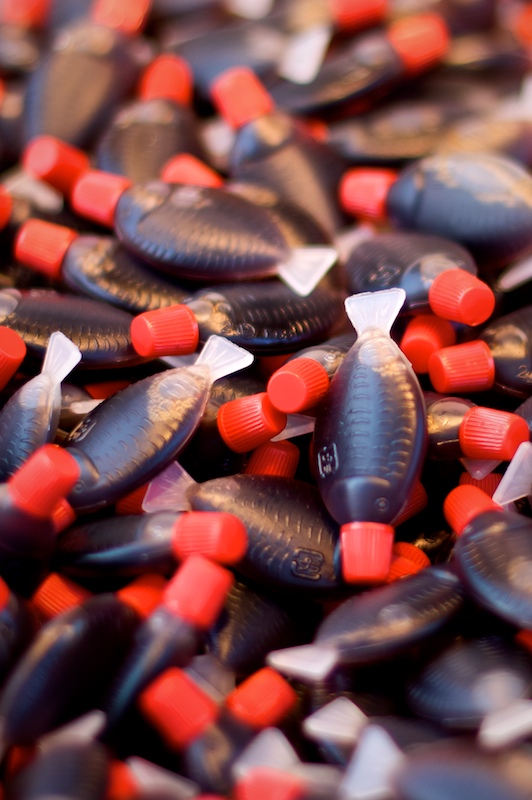Fish-shaped soy sauce bottle
Tiny fish, big problems
I still vividly remember the first time I tasted sushi. I was 21, working in San Francisco for the summer. My newly-found American friends could not believe that I had never tasted sushi before, and were quietly amused by the situation. I had to explain that in Barcelona, where I was from, I had never even seen sushi, and I had only heard about tales of faraway people in Japan eating raw fish. It sounded like a most bizarre custom.
Fast forward 20 years. I’m about to jump into the other side of the Pacific Ocean, in Gordon’s Bay, in Sydney, Australia. I’m now working as a marine ecologist and I’m about to do some surveys as part of my research on underwater forests. As I step into the water, I have to dodge various pieces of plastic that the swell has brought to shore. Among the debris, are little plastic sauce containers in the shape of a fish. They are usually filled with soy sauce, which is used to season the raw fish that was once so exotic to me.
Sushi is, of course, no longer a mysterious food. There is now a sushi bar in most corners of every major city of every single continent on Earth. And wherever there’s a sushi bar there are also hundreds of these minute fish-shaped saucers, which to me symbolise three of the greatest challenges facing us in the anthropocence.

Image: Andrea/Flickr CC
Firstly, their omnipresence is for me a symbol of globalisation and the homogenization of life on Earth, both in terms of human culture but also in terms of ecology and biodiversity. Everything is starting to look the same, wherever we go.
And with that homogenisation comes an overall loss of ‘uniqueness’, which fills me with conflicting thoughts. On the one hand, I remember thoroughly enjoying and devouring my first sushi meal and feeling very special indeed to be discovering this millennial Japanese custom. But on the other hand I realise it’s precisely because of global citizens like me, sharing and discovering their customs around the world, that we are living in an increasingly uniform planet.
Secondly, in my mind these plastic fish are also a potent symbol for overfishing, undoubtedly one of the greatest impacts us humans have had in the world’s oceans. 90% of our fish stocks are today either fully fished or overfished, and this is obviously simply unsustainable. We need to stop relying on wild fish as a food staple, just like we stopped relying on wild meat from land animals millennia ago. But right now, we are ashamedly in the position of still relying largely on wild fish to feed the ever-increasing demand for raw fish in sushi bars.
Finally, the little plastic fish-shaped soy sauce container is a poster child for the increasingly huge plastic problem that is enveloping our world. Although plastic items only started to be mass produced in the 1950s, plastic is so incredibly slow to decompose that nearly all of the plastic that has ever been created still exists today. And much of this plastic (about 8 million tonnes of it per year) ends up in the world’s oceans every year. Making matters worse, the tiny nature of these fish saucers makes them particularly tricky to recycle, as they tend to fall in between the cracks of the recycling machines.
Curiously, however, despite these little fish representing such mammoth problems, they are also pretty in their own way, a simple design that is a very good example of the Japanese ‘kawaii’ obsession with making things exceptionally cute. They also represent quite a revolutionary design. Their re-sealable nose means you can save any unused soy sauce, and its shape and material make it non-drip, dispensing sauce only when squeezed. No wonder they have taken over the world.
And this is how I still find myself smiling, despite having to collect one last bit of plastic rubbish before becoming immersed in my beloved underwater world. The small feat of design ingenuity represented by these tiny fish saucers somehow brings hope to my inner self. It points towards how, in the anthropocene, not only are we leaving an everlasting mark on planet Earth, but we are also coming of age technologically, and developing the tools that allow us to fix environmental problems at a meaningful scale. I can’t help but think that ours is the generation to start turning things around, and develop the very solutions that will stop the self-destructive trajectory that has so far led us to the anthropocene. To me, it’s clear that is the only way forward.

